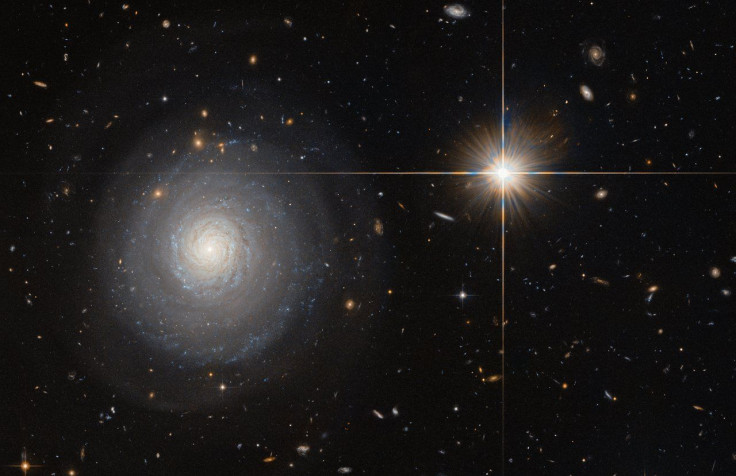Hubble Spies MCG+07-33-027: A Lonely Starburst Galaxy Far, Far Away

A camera aboard the Hubble Space Telescope has captured a spectacular image of a galaxy caught in the midst of an unusually fast star-forming spree. The image, released Friday, shows MCG+07-33-027 — a “starburst” galaxy located roughly 300 million light-years from Earth.
As MCG+07-33-027 is seen face-on, the galaxy’s spiral arms and the bright star-forming regions within them are clearly visible. The bright object seen on the right is a foreground star located in our own galaxy.
Starburst galaxy is a name given to those galaxies that are briefly experiencing an extraordinarily high rate of star formation. While normal galaxies produce only a couple of new stars per year, starburst galaxies can produce a hundred times more than that.
Although the mechanism that triggers this starburst phase is still poorly understood, astronomers believe the intense period of star formation is often caused by a collision with another galaxy — as is evident in the Antennae Galaxies NGC 4038 and NGC 4039.

“MCG+07-33-027, however, is special; while many galaxies are located within a large cluster of galaxies, MCG+07-33-027 is a field galaxy, which means it is rather isolated,” the European Space Agency explained in a statement accompanying the image. “Thus, the triggering of the starburst was most likely not due to a collision with a neighboring or passing galaxy and astronomers are still speculating about the cause.”
The Hubble Space Telescope was launched aboard NASA’s space shuttle Discovery on April 24, 1990. Since then, it has not only captured an unimaginable number of truly spectacular nebulae and galaxies, it has also peered back over 13 billion years to look at our cosmos in its infancy, giving us, as NASA aptly put in an earlier statement, “a front row seat to the awe inspiring universe we live in.”
© Copyright IBTimes 2025. All rights reserved.






















